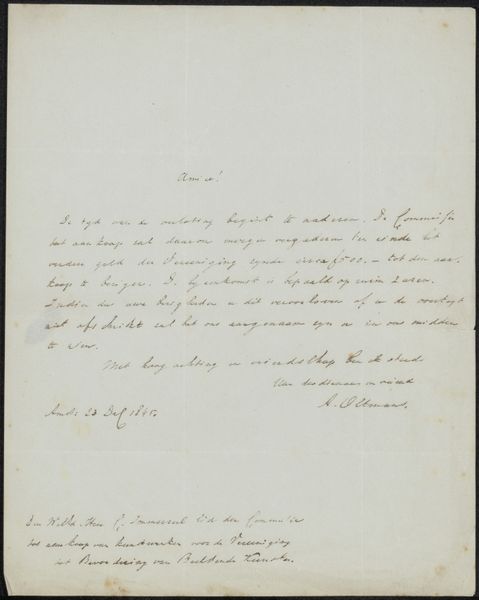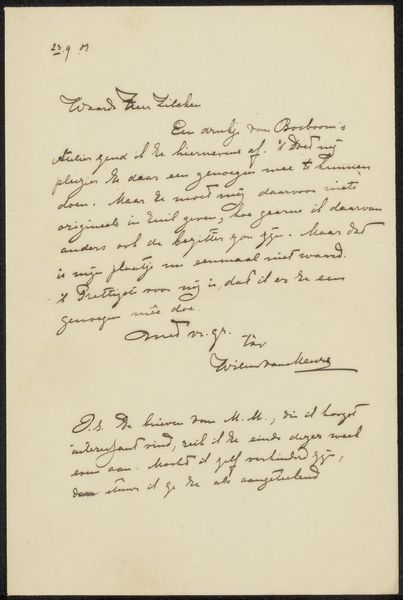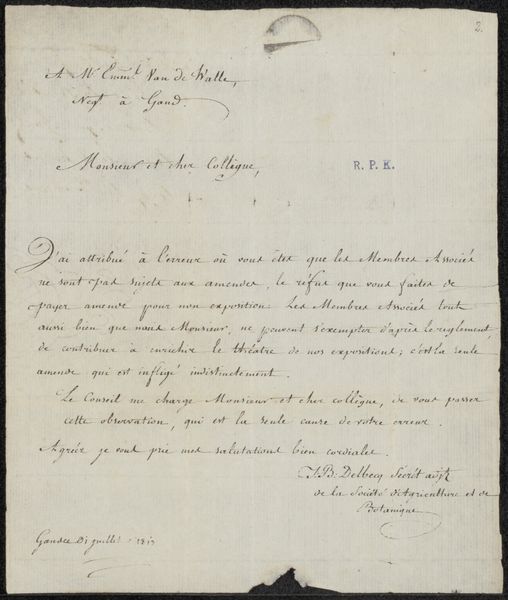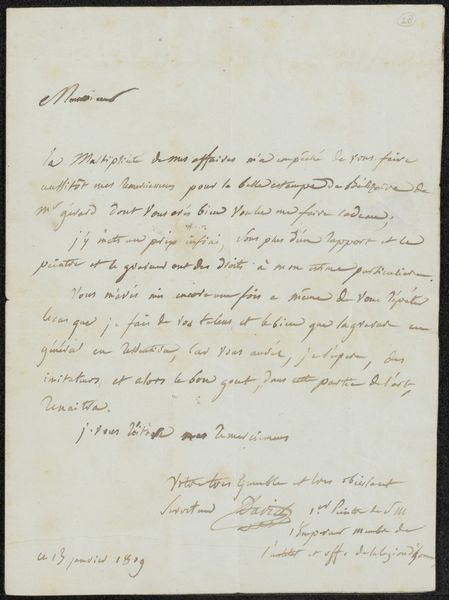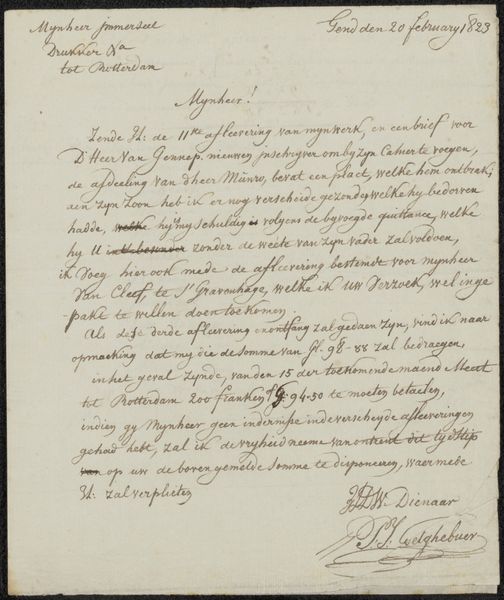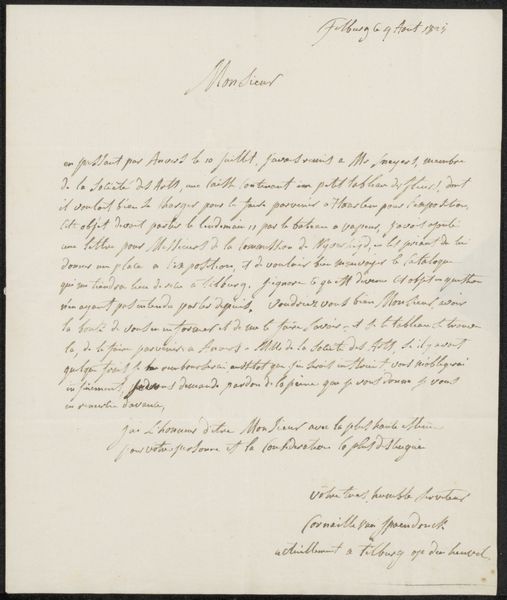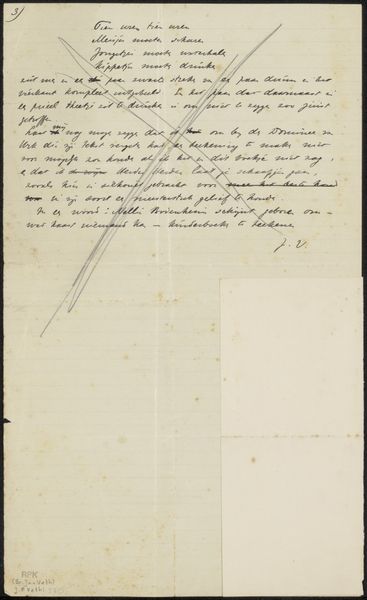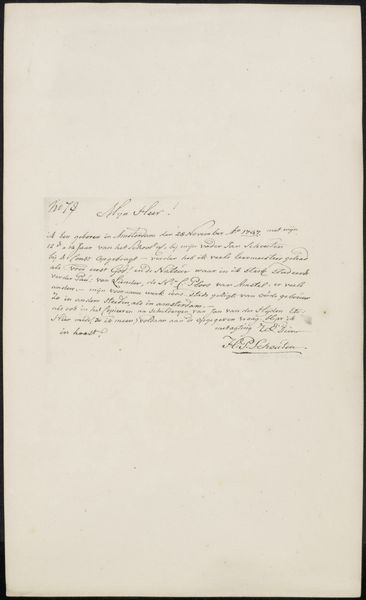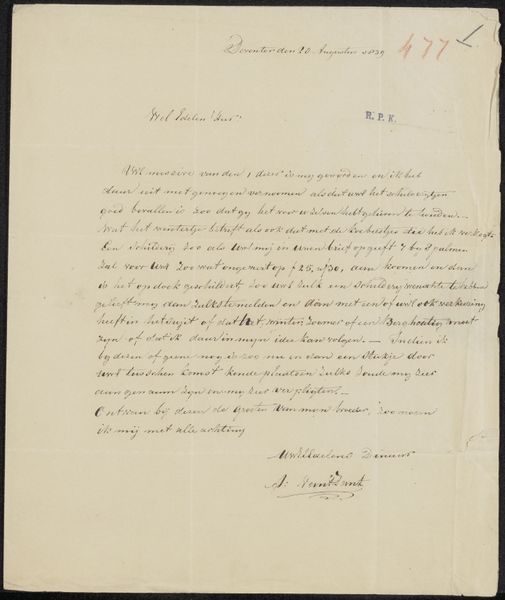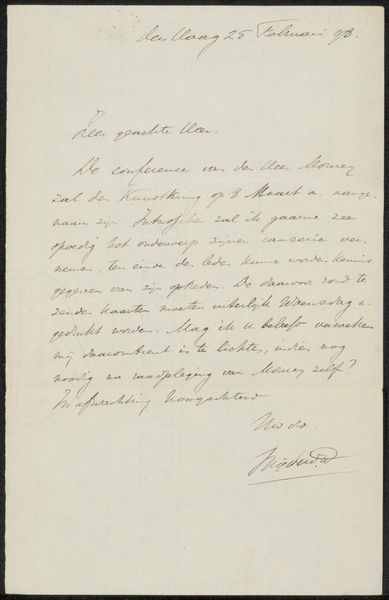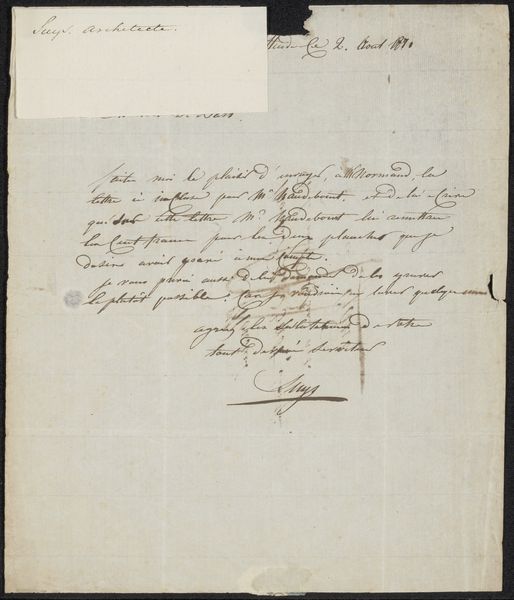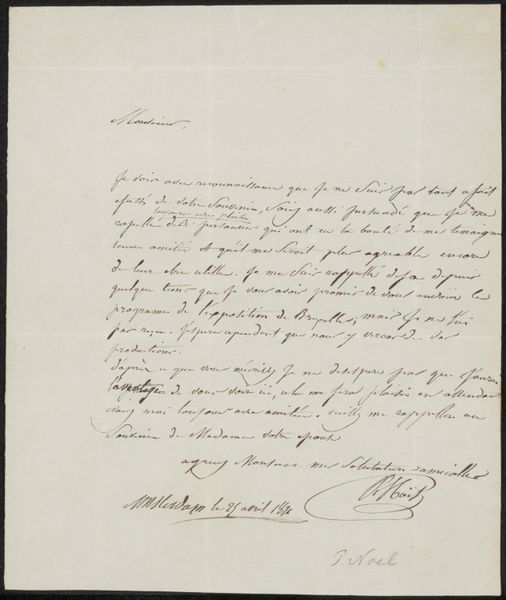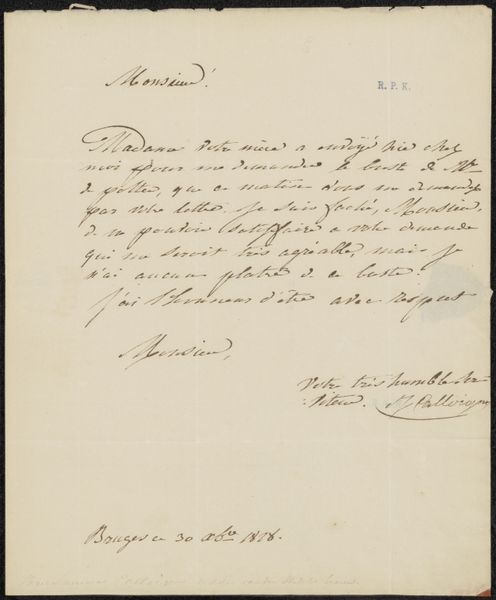
Brief aan Pieter van Huffel, voorzitter van de Société des arts (Gent) Possibly 1824 - 1827
0:00
0:00
gilleslambertgodecharle
Rijksmuseum
drawing, paper, ink, pen
#
drawing
#
paper
#
ink
#
pen
#
calligraphy
Copyright: Rijks Museum: Open Domain
Editor: Here we have "Brief aan Pieter van Huffel, voorzitter van de Société des arts (Gent)", or "Letter to Pieter van Huffel, chairman of the Société des arts (Ghent)", possibly from 1824 to 1827, made with pen and ink on paper by Gilles-Lambert Godecharle, preserved at the Rijksmuseum. It's fascinating how a simple handwritten letter can become a work of art. What stands out to you when you look at this piece? Curator: Certainly. Looking at this letter through a formalist lens, I am drawn to the interplay of line and space. The calligraphic strokes create a visual rhythm across the page. Note the density and texture achieved solely through the modulation of line thickness and the varying pressure of the pen. Do you see how the script both fills the space and allows for moments of emptiness, creating a dynamic composition? Editor: Yes, I see that contrast now. It's almost musical, the way the eye moves across the page. Is the form of the writing, its structure and design, perhaps more important than its actual content, from a formalist point of view? Curator: Indeed, while the semantic content undoubtedly held significance for its original recipient, for the formalist critic, meaning is primarily derived from the visual experience itself. We are invited to consider the aesthetic relationship between the different elements of the piece—the loops, the ascenders and descenders, and the negative space around them. Editor: So, focusing on how those elements contribute to the overall visual experience becomes the primary way to understand the work? Curator: Precisely. The emphasis shifts from external references to internal relationships—the formal structure itself reveals and determines meaning. The beauty of the letter resides in its visual execution and balance. Editor: I never thought about handwriting in such detail before. I realize that the medium of language, its construction on the page, has inherent value beyond its explicit meaning. Curator: Absolutely, exploring that boundary expands our understanding of the artistic impulse at play, and refines the terms of engagement with the artifact.
Comments
No comments
Be the first to comment and join the conversation on the ultimate creative platform.
